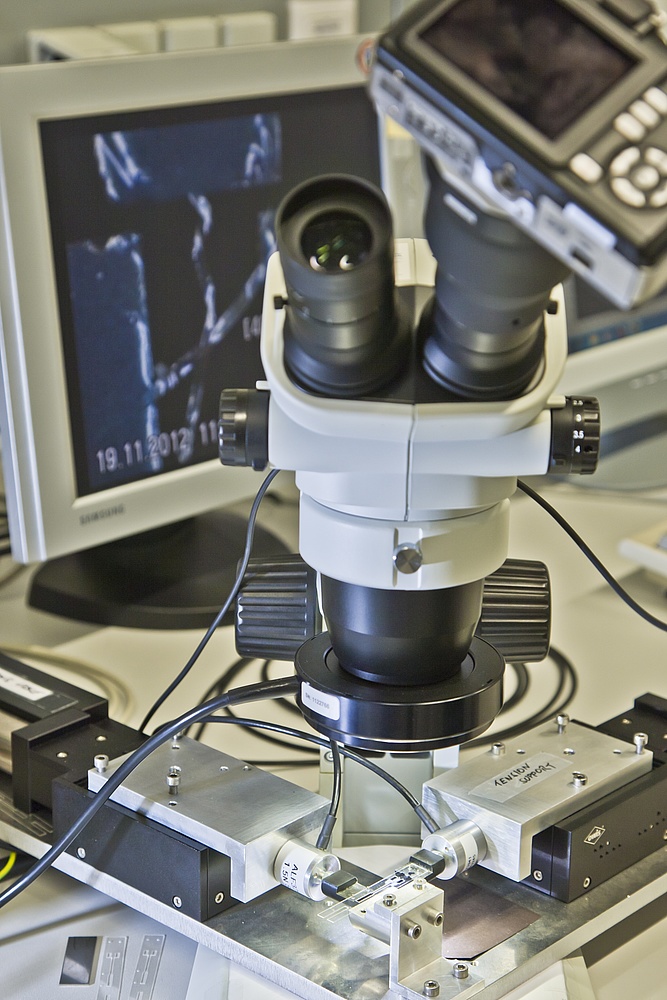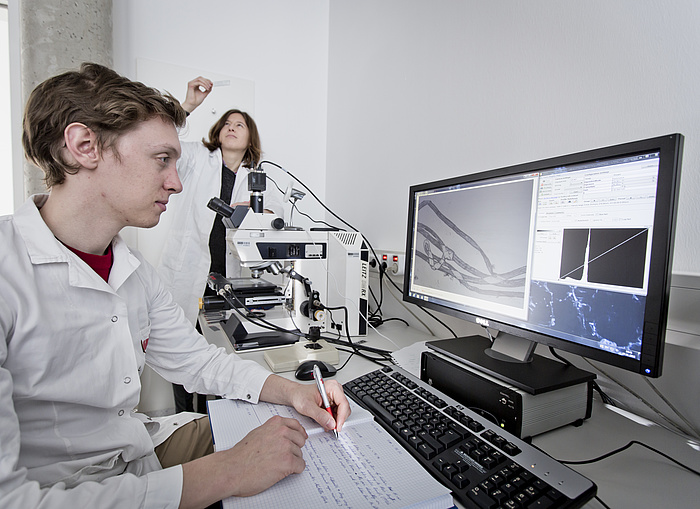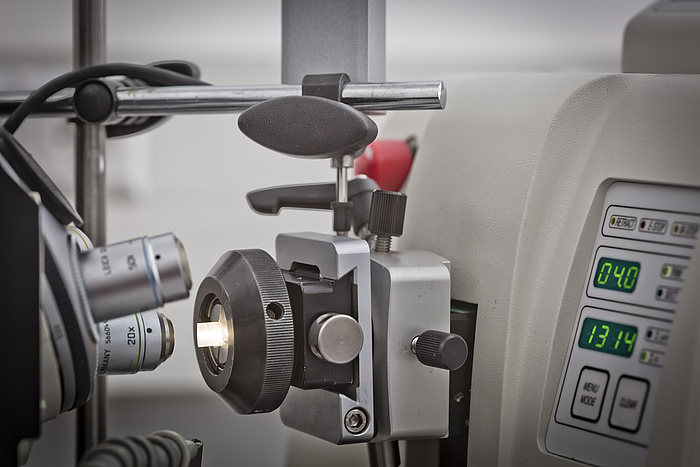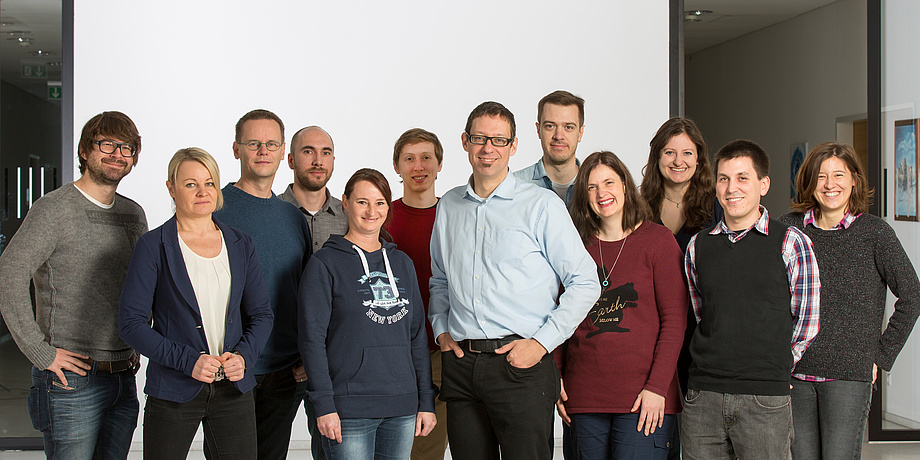In the new “CD Laboratory for Fiber Swelling and Paper Performance", the individual fibres are measured and analysed in order to design the behaviour of the next generation of paper.
Ever-increasing digitalisation is an enormous challenge for printing shops and printer manufacturers. But there is one print technology which is growing – in contrast to all the others: high-speed ink-jet printing. The great advantage of this technology is its amazing speed. It hardly takes half a second for a sheet to be printed and dried. Since no printing plate has to be produced for ink-jet printing, one can print small runs without any time-consuming preliminary work and at low cost. For this reason it’s the technology of choice for the growing print on demand market. One obstacle to this road to success, however, can be the paper. If it doesn’t dry fast enough, it can lead to images and texts being smudged.

The mechanical properties of single paper fibres (length 1–3 mm, thickness 15–30 µm) are measured and used to create mechanical models of fibre networks.
Made for each other
To design special paper, as for high-speed ink-jet printing, the CD Laboratory for Fiber Swelling and Paper Performance was set up at TU Graz last year. One of its aims is to develop high speed ink-jet compatible paper and thus also to prepare the ground for the production of optimised printers. “We’ve been working more than 15 years on improving the printability of paper for a variety of printing methods,” explains the head of the CD Lab, Ulrich Hirn. The researcher has managed to win over two important international cooperation partners for the new CD lab. One is Mondi Uncoated Fine and Kraft Papers, a paper group with head office in Vienna, and Océ Technologies, a Dutch subsidiary of Canon, which produces digital printers for the world market.

Fiber Swelling has an effekt on strength and deformation of paper during printing.
Characterising fibres
Simulations play a central role in the development of ink-jet suitable paper. Mechanical models have to be worked out for which many single paper fibres have to be characterised in the first place. “The characteristics of the paper depend on the characteristics of the individual fibers,“ explains Ulrich Hirn. “The paper depends on the raw material and how the fibers are treated.“ The individual fibres are also responsible for the printing characteristics. If they’re stiff, for instance, a bulky sheet is obtained. However at the same time, the bending stiffness is increased at the expense of the tensile strength, and absorption of liquid is improved. The Fiber swelling properties of individual fibres must be exactly investigated so that changes can be made to the paper to satisfy demands.
Tedious analysis
Since each fibre has its own complex geometry and different mechanical properties, its characterisation is an extremely time-consuming matter. “To mechanically test tensile strength, elastic-plastic behaviour and creep behavior upon moisturing, we need several months to examine a single fiber grade,” reports Ulrich Hirn. A group of highly specialised experts is solely responsible for these time-consuming tests. After years of many gruelling unsuccessful attempts, maybe you can provide a detailed characterisation of several hundred paper fibres for different pulp grades.

The paper structure is analyzed to understand the process of mechanical failure under load.
Simulated printing presses
“It’s primarily the printing press manufacturers that need such models,” explains the paper researcher. “Because then they can simulate and optimise a new press before manufacturing it in the production shop.” To reduce the development time of printing presses, interaction between press and paper is simulated by means of simulations before production. If paper buckling occurs, the paper may rub, the paper can rub against the print head and smudge the ink. In the case of high-speed ink-jet printers, the danger of this is high since the distance between print head and paper is only around one milimetre. To avoid such problems, the printers are adapted to the characteristics of the paper in the design phase. Since the raw material paper also has strong “internal tensions”, these also have to be included in the simulations. “These tensions are responsible for many unwanted reactions, like paper curl during drying,” says Ulrich Hirn.
Reinforcement for heavy duty papers
Apart from paper for printing, papers for bags, like those used in cement bags, will also be examined in depth. The research aim is to achieve an improved tear strength in these heavy duty papers while at the same time lowering costs. This is anything but an easy combination of tasks – but you never find them in any other interesting research projects.




